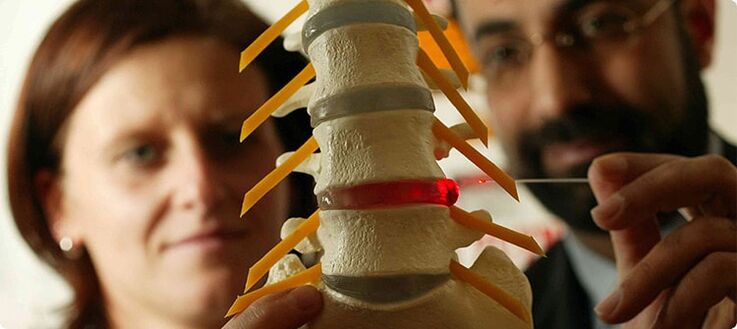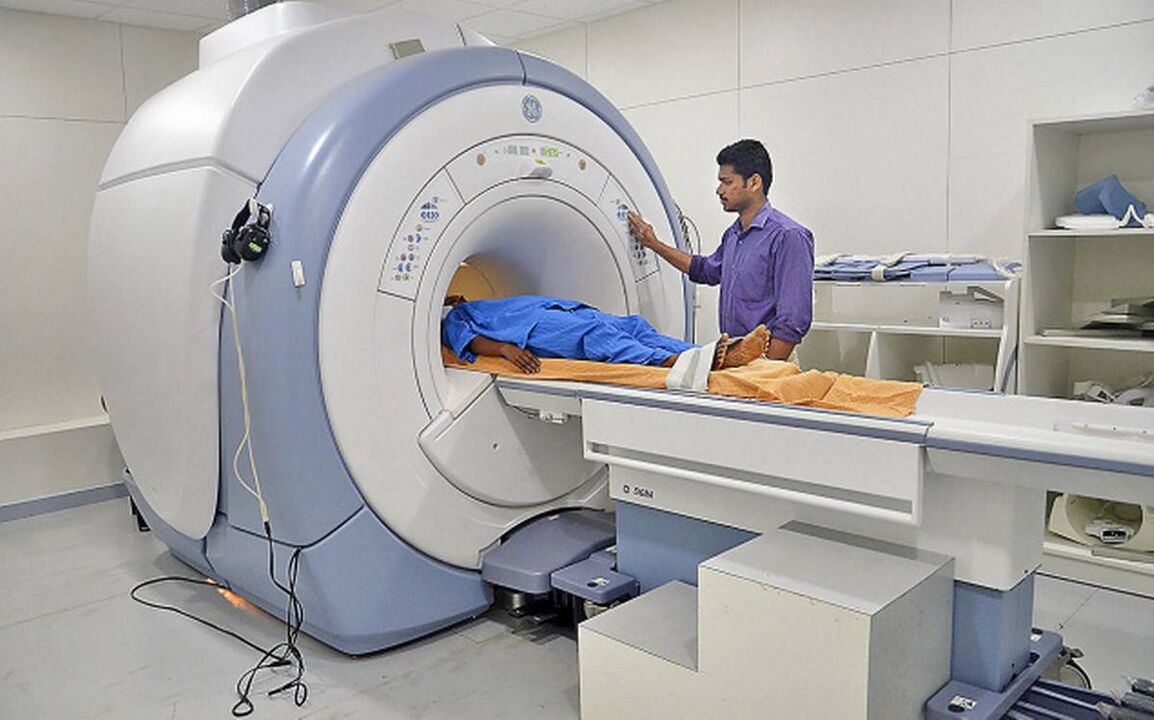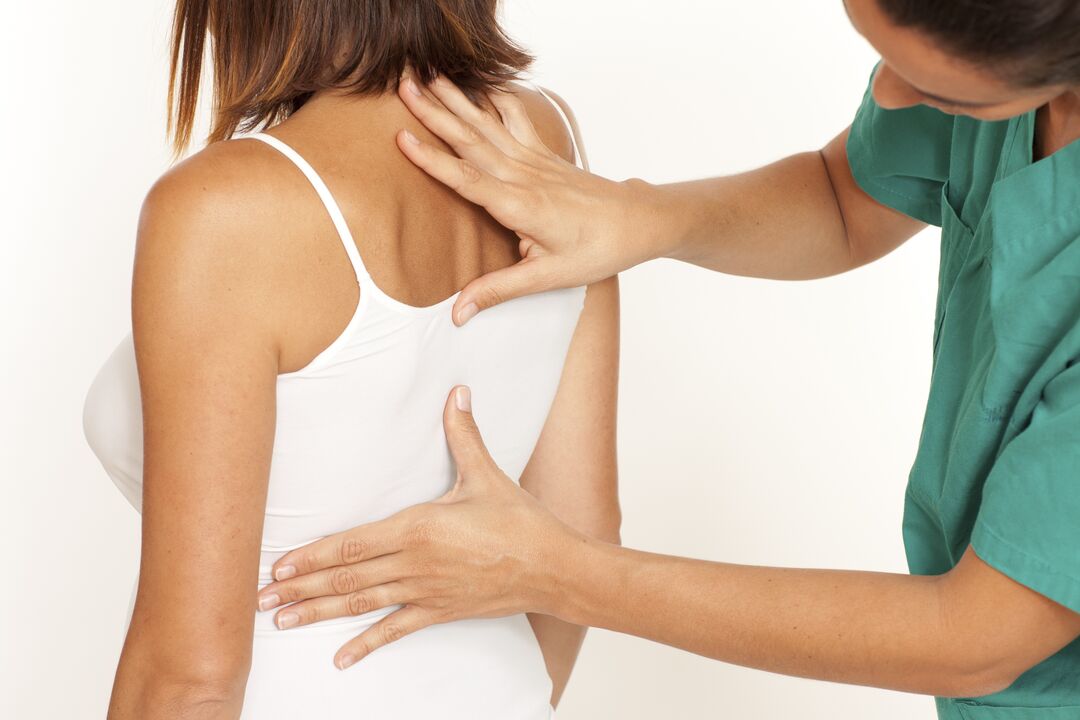The symptoms of thoracic osteochondrosis depend on which vertebra is affected by dystrophic lesions, and their intensity depends on what changes occur in it. After listening to the patient's complaints, an experienced specialist will be able to make a correct diagnosis and tell you which part of the spine has undergone significant changes and destruction. The sooner a doctor diagnoses thoracic osteochondrosis and prescribes medication, the sooner relief will come.
Thoracic osteochondrosis is less common than cervical osteochondrosis because the thoracic spine is less susceptible to stress and deformation. However, it causes a lot of pain and discomfort and has different symptoms.

Thoracic osteochondrosis, symptoms and signs
The pain is mainly localized between the shoulder blades or in the intercostal space. Often, thoracic osteochondrosis manifests itself as pain in the ribs of the body. Patients describe such pains with a feeling of "share in the chest", their mobility is impaired, because the pain is carried in the slightest careless movement. The pain is exacerbated by coughing, sneezing, deep breathing and turning the body. Shortness of breath is visible, breathing is shallow and frequent. It is very difficult to raise or bend the patient's arms, as this causes sharp and severe pain. Anxiety is also caused by body vibrations, such as cycling, driving on rough roads, as well as any jump. Cooling of the body can lead to exacerbation of pain, and even with proper treatment, the disease can begin with renewed vigor.
Often the pain is located in the spaces between the ribs. This is due to compression of the nerve roots that cause intercostal neuralgia. At night, the pain intensifies, and when turning sideways or changing posture, the patient wakes up with a sharp piercing pain, despite being treated with painkillers.
Sweating, fatigue and rapid fatigue are accompanied by pain symptoms, and sometimes a local increase in temperature is observed in the inflamed segment of the spine.

Dorsago and dorsalgia symptoms
Severe and very sharp pain is called dorsago. Symptoms of dorsagon with thoracic osteochondrosis occur in people who sit motionless for a long time in a forward-leaning position of the body. With a sharp rise or change of position, the body is pierced with sharp pain. It is so strong and unpredictable that it makes you short of breath and makes it difficult to breathe. The chest and back muscles become stone-like, sometimes punctured by cramps. The treatment reduces pain and brings relief to the patient.
Dorsalgia, on the other hand, is a pain of a painful nature. It's not terribly interesting, but it is strangely watchable. Sudden and rapid movements, coughing, sneezing, or deep inspiration pierce the body with pain at both lightning speed. The twists and bends of the body are also given with difficulty and pain. The back and chest muscles are tense and the feeling is dominant, as if the upper body is pulled together with a belt.
Sometimes it is enough to walk or do light exercise to get rid of these pains or temporarily relieve the condition.
Symptoms of neurological nature in osteochondrosis
Osteochondrosis of the thoracic segment is often accompanied by neurological symptoms. It manifests itself with a feeling of "eyelid" or loss of sensation in the abdomen or upper chest. Occasionally, patients report tension or stiffness in the back muscles, especially the upper back, as well as the chest. In more severe and advanced cases, there is a violation of the pelvic organs.
In men and women, thoracic osteochondrosis persists in almost the same way and the symptoms are similar. The only difference is that women have a late onset of the disease. Women are prone to this disease during menopause. This is due to a decrease in the hormone progesterone, which protects the spine, or rather the spinal discs from abrasion.
A woman with osteochondrosis may have strange symptoms such as peeling of the skin and breaking of the nails. Women are more difficult to tolerate both thoracic and cervical osteochondrosis, which is associated with lower back pain of the weaker sex.
Men, on the other hand, are more likely than women to have specialists with osteochondrosis of the breast, and the average age is about 30-40 years. Men may complain of diminished potential. The most important thing here is to admit the intimate problem to the doctor and not to treat it yourself.
Symptoms of osteochondrosis can be confused with other diseases
Because there are many nerve fibers and ends in the thoracic region, the pain behind the sternum can spread in any direction. The symptoms of osteochondrosis are very similar to the symptoms of other diseases, which aggravates the situation with the diagnosis. Early diagnosis and treatment of osteochondrosis is very important for a more favorable outcome of the disease.
Many people confuse osteochondrosis with heart disease. But here are some differences worth remembering. First, pain with thoracic osteochondrosis lasts longer and cannot be treated with heart medication. And the second symptom is the absence of an increase in blood pressure, as is often the case with a disease of the cardiovascular system. And most importantly, the ECG results do not show any abnormalities in the heart.
In women, the pain can spread to the mammary glands, and this symptom of thoracic osteochondrosis is very common. In this case, it is necessary to consult a mammologist and rule out breast disease.
Sometimes the patient complains of pain in the epigastric region, which can be confused with gastritis or gastric ulcer. The pain may also be localized in the right hypochondrium, and unqualified medical personnel may suspect cholecystitis or pancreatitis. Appendicitis can be suspected with pain in the lower abdomen. In such cases, it is advisable to perform an ultrasound examination of the abdominal organs, additional examination of the stomach X-ray and EGD, and, of course, a clinical blood test.
If the lower part of the thoracic spine is affected, the patient will have symptoms of intestinal disease. But this situation does not depend on the food taken, and the pain is exacerbated by physical force.

If osteochondrosis affects the upper part of the spine, then the pain will spread to the pharynx and esophagus. The patient will feel the symptoms of a foreign body in the throat and may have difficulty swallowing especially poorly chewed food.
Only a doctor should deal with the diagnosis and treatment, in which case self-medication is unacceptable.
The impact of the profession on the development of osteochondrosis
Features of some occupations can develop osteochondrosis. This is especially true of sedentary lifestyles in professions such as truck, pilot, and machinist. Also at risk are occupations related to weight lifting, such as loaders. Prolonged lifting and carrying large loads can cause friction and flattening of some vertebrae, leading to osteochondrosis and not only thoracic but also cervical and lumbar segments of the spine. In more advanced cases, the arms or back begin to approach the area of the shoulder blades. This is a wake-up call to contact a specialist for examination and treatment.
Most office workers are prone to cervicothoracic osteochondrosis. That is, not only the thoracic vertebrae, but also the cervical vertebrae are involved in the process of change and destruction. Sitting in front of a computer for long periods of time, even in the wrong position, can lead to weakening and shaking of the muscles that support the spine. The vertebrae begin to move, thereby squeezing the nerves.
Also, inactivity in one position disrupts the blood flow to the intervertebral discs, leading to starvation of the disc tissues and their destruction. They feel pain in the head, shoulders and chest. They have hearing loss and tinnitus. With a sharp rise or movement of the head, the worker may lose consciousness because the vestibular apparatus is disturbed. Vision is often impaired, flies appear in front of the eyes. The shoulder girdle and chest muscles begin to ache as after a long workout.
It happens that it is worth changing your profession after treatment, because relapses are often possible in the old workplace.
































